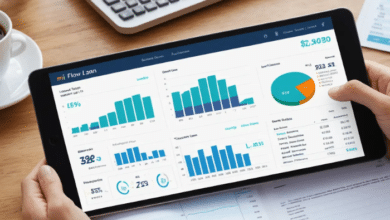Exploring “mysk2 dyndns org 4”

The term “mysk2 dyndns org 4” often raises questions among users exploring the dynamic DNS (Domain Name System) landscape. It refers to a specific URL structure within the DynDNS ecosystem, which provides robust and scalable solutions for managing IP addresses dynamically. By diving deeper, you can unlock the potential of using this technology for web services, personal servers, or other network-related needs. “mysk2 dyndns org 4” acts as a gateway for efficient and secure access to services remotely, a valuable asset in today’s digital age.
What is Dynamic DNS, and How Does it Relate to “mysk2 dyndns org 4”?
Dynamic DNS, or DynDNS, is a service that automatically updates the domain name with the corresponding IP address when it changes. This functionality is essential for users with dynamic IP addresses from their Internet Service Providers (ISPs). “mysk2 dyndns org 4″ is an example of a subdomain within the DynDNS framework, showcasing its capability to link easily to changing IPs. This service enables seamless access to remote devices or services, such as home automation systems, servers, and CCTV cameras, making it indispensable for tech-savvy users.
Setting Up “mysk2 dyndns org 4”
The setup process for “mysk2 dyndns org 4” involves several straightforward steps:
- Account Creation: Begin by creating an account with a DynDNS provider, ensuring you select a reliable and trusted platform.
- Subdomain Selection: Opt for a subdomain like “mysk2” to represent your unique dynamic DNS address.
- Configuration: Configure your router or device to sync with the DynDNS service. Enter the relevant credentials and subdomain information.
- Verification: Verify the functionality by testing the URL “mysk2 dyndns org 4” to ensure it points to your intended device or server.
This streamlined process allows you to harness the benefits of dynamic DNS in minutes.
Benefits of Using “mysk2 dyndns org 4”
Using “mysk2 dyndns org 4” offers numerous advantages:
- Remote Accessibility: Access devices and services from anywhere without remembering complex IP addresses.
- Cost-Effective: Avoid the expense of acquiring a static IP address from your ISP.
- Enhanced Security: Secure connections with optional features like SSL certificates.
- Easy Management: Simplify the process of managing multiple devices under one domain.
- Automation: Automatic updates save time and reduce manual effort.
These benefits make “mysk2 dyndns org 4” a preferred choice for various applications.
Common Use Cases for “mysk2 dyndns org 4”
Dynamic DNS solutions like “mysk2 dyndns org 4” have diverse applications:
- Home Servers: Host a personal website or file server without the need for a static IP.
- IoT Devices: Remotely control smart home devices, enhancing convenience and efficiency.
- Surveillance Systems: Monitor CCTV cameras from any location using a secure connection.
- Gaming Servers: Set up multiplayer gaming environments with ease.
- Business Applications: Manage enterprise systems remotely for improved operational continuity.
These versatile applications demonstrate the practicality of dynamic DNS services in everyday scenarios.
Troubleshooting “mysk2 dyndns org 4”
Occasionally, users may encounter issues with “mysk2 dyndns org 4.” Here are some common problems and solutions:
- Connection Errors: Ensure the IP address associated with the subdomain is accurate and up to date.
- Router Configuration Issues: Verify that your router supports DynDNS and is correctly configured.
- Firewall Restrictions: Check your firewall settings to allow traffic through the necessary ports.
- DNS Propagation Delays: Wait for DNS changes to propagate fully if you recently updated settings.
- Credential Mismatches: Double-check your login credentials and API tokens to avoid authentication errors.
By addressing these issues promptly, you can maintain seamless functionality.
Advanced Tips for Optimizing “mysk2 dyndns org 4”
To maximize the potential of “mysk2 dyndns org 4,” consider these advanced tips:
- Use Dynamic Updates: Ensure your device or router supports dynamic updates for real-time synchronization.
- Leverage Encryption: Implement HTTPS for secure connections, safeguarding data during transit.
- Monitor Traffic: Use analytics tools to track and optimize traffic to your dynamic DNS domain.
- Backup Configurations: Regularly back up your DynDNS settings to avoid disruptions during outages.
- Explore API Integration: Integrate DynDNS functionalities into custom applications for enhanced automation.
These strategies empower users to make the most of their dynamic DNS setup.
Conclusion
“mysk2 dyndns org 4″ exemplifies the power of dynamic DNS in streamlining remote access and connectivity. Whether you’re hosting a server, managing IoT devices, or ensuring secure surveillance, this technology delivers unmatched flexibility and reliability. By understanding its setup, benefits, and potential challenges, users can unlock a world of possibilities, enhancing their digital experiences and simplifying network management.
FAQs
1. What is “mysk2 dyndns org 4”?
It is a subdomain within the DynDNS service, used for dynamic IP management and remote access.
2. How do I set up “mysk2 dyndns org 4”?
Create a DynDNS account, select a subdomain, configure your router or device, and test the URL to ensure functionality.
3. Is “mysk2 dyndns org 4” secure?
Yes, with proper configuration and added security measures like SSL certificates, it offers a secure solution for remote access.
4. What are the benefits of using “mysk2 dyndns org 4”?
Key benefits include remote accessibility, cost savings, enhanced security, easy management, and automation.
5. Can I use “mysk2 dyndns org 4” for gaming servers?
Absolutely! It simplifies hosting multiplayer gaming servers, making it easy for players to connect without needing a static IP.




